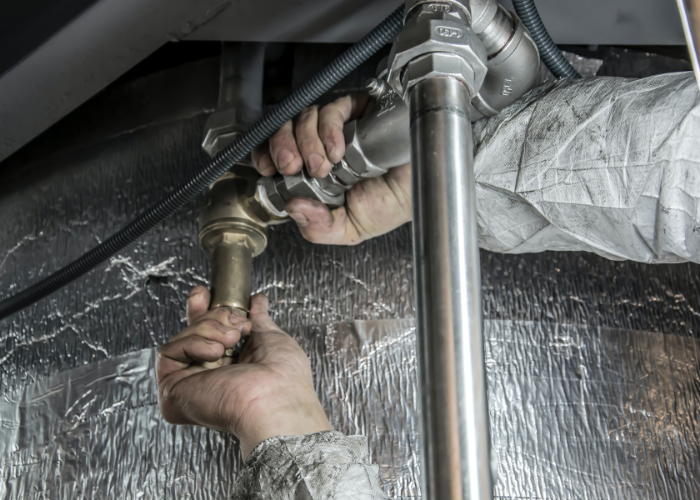Wet rot can be extremely harmful to a building's interior structure as it badly damages timber and relentlessly eats through any wood in its path. Quick, effective treatment of wet rot is necessary to stop the fungus in its path, otherwise, wet rot can spread and cause untold harm to a property's interior structure.
Alliance Preservation are experts in treating both dry rot and wet rot. Our team possesses the knowledge, experience and tools to properly treat wet rot and either replace or restore the damaged timber.
With satisfied customers across Scotland, Alliance can deal with any type of dry or wet rot problems in the following areas:
- Perth
- Glasgow
- Edinburgh
- Dundee
- Aberdeen
- Stirling
- Fife
For quality and effective wet rot treatment, contact us at 01764 663107 today.
What is the difference between wet rot and dry rot?
Both wet rot and dry rot are harmful fungi that damage and eat away timber. Although similar, wet rot needs higher moisture content on the timber to form.
Dry rot only needs between 10-30% moisture content to start growing, while wet rot needs more than 50% moisture content.
This means that dry rot will form quicker and easier compared to wet rot and can often go undetected due to the insignificant amount of moisture needed.

The main differences between wet rot and dry rot are:
- Dry rot only needs 10-30% moisture content compared to +50% for wet rot
- Wet rot can form in many types, whereas there is only one type of dry rot fungus
- Dry rot spreads quicker than wet rot, making it more harmful to your property
- Wet rot is less spreadable due to the high moisture content needed – it tends to stay only where there is significant water damage
Identifying the type of rot present in your property is the first step in effective wet rot treatment. To ensure your wet rot problem is handled properly, contact us for a robust property survey and effective wet and dry rot treatment in the areas needed.
Common causes of wet rot
As wet rot needs a high moisture content to form, the most common cause is faulty plumbing or a badly damaged pipe. Unlike dry rot, which can form without any major leaks or water damage, you’ll (normally) be aware of wet rot forming as the leak will alert your attention.
If you’re wondering what causes wet rot, see our list below:
- Plumbing leaks
- Broken pipes
- Damaged roofing
- Leaking gutters
- Broken washing machine
- Defective masonry pointing
The most effective way to prevent wet rot from forming is to deal with the leak. Without a leak or severe water damage, wet rot will be unable to grow or spread. Alliance can then take the appropriate measures to remove the wet rot entirely and replace the damaged timber to ensure optimal structural preservation.
Ways to identify wet rot
Identifying the type of rot present in your property can be difficult. Dry rot and wet rot are both types of fungi, so they look similar in appearance and only appear in damp conditions. However, there are some small differences to look out for.
Common signs of wet rot are:
- Soft, spongey feel to the timber
- Darker colour and discolourtation of wood
- Timber is cracked or shrunk in size
- Fungus growth – look out for white, grey mycelium strands
- Timber has become fragile and broken
- A strong damp smell
Unfortunately, many of these common signs of wet rot are also common signs of dry rot, making it difficult to tell the difference. Remember that wet rot will need a higher moisture content than dry rot, so be sure to look around for any major leaks or water damage near to the forming wet rot fungus.
Our team can perform a property survey to identify what type of rot is forming in the specified area to fully eradicate the rot problem. Contact our expert team today if you suspect dry or wet rot is forming on your property.
.png)
Alliance: Wet rot specialists
As wet and dry rot specialists, we can help deal with any type of rot or preservation problem found on your property. We offer a full survey service to identify the problem and then will offer our advice on the best form of wet rot treatment.
Each case of dry rot and wet rot is different, but our qualified personnel from the Alliance wet rot specialists will:
- Use specialist equipment throughout the property to identify the issue and evaluate the extent of the wet rot outbreak
- Address the source of water or moisture to fully remove the conditions needed for wet and dry rot to thrive
- Treat infected rot areas with fungicide (or other chemicals if necessary) to stop the rot in its tracks
- Remove and treat infected timber, plaster and masonry if needed
- Replace the infected timber with new wood to restore structural integrity to the building
- Ensure the new timber is properly treated to prevent any rot from forming in the future.
To book your initial Alliance survey or to get our experts to your property for an effective wet rot treatment service, contact us today.






